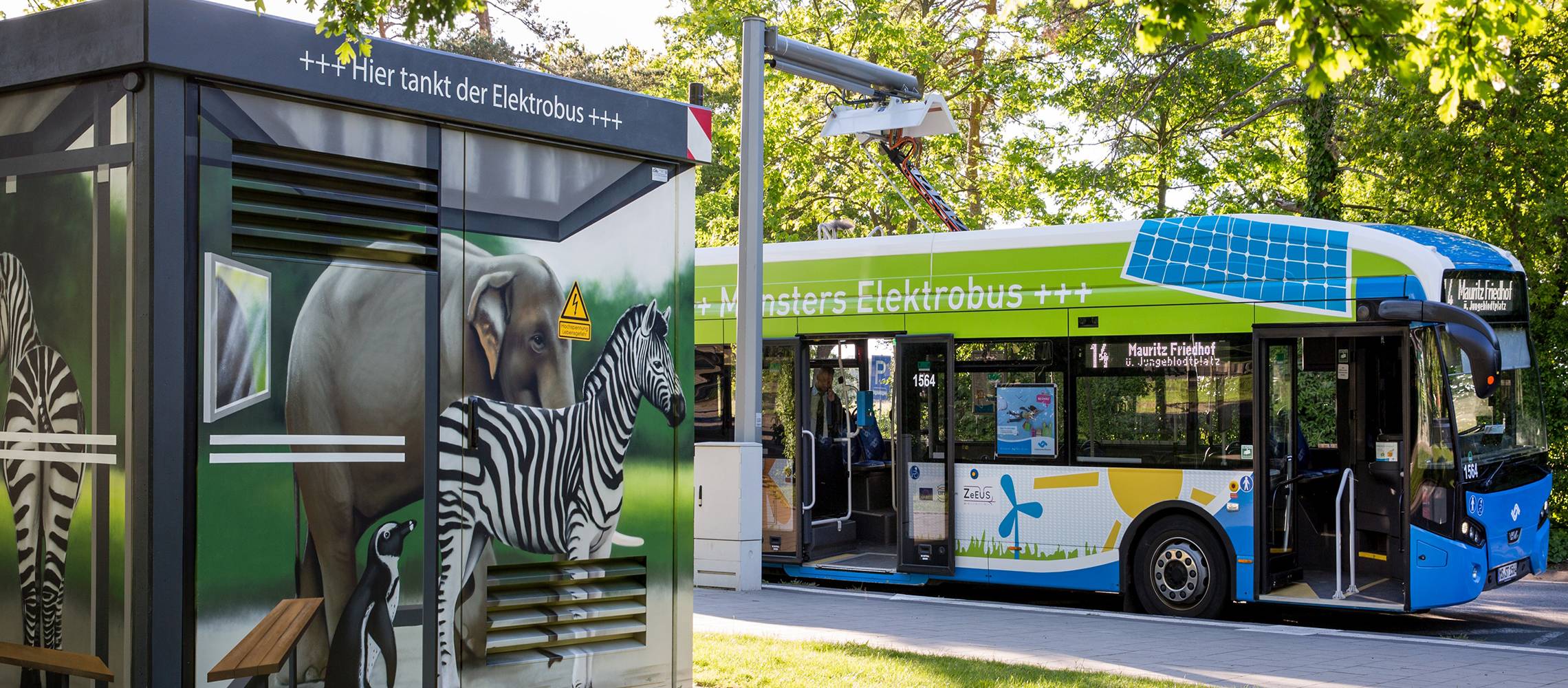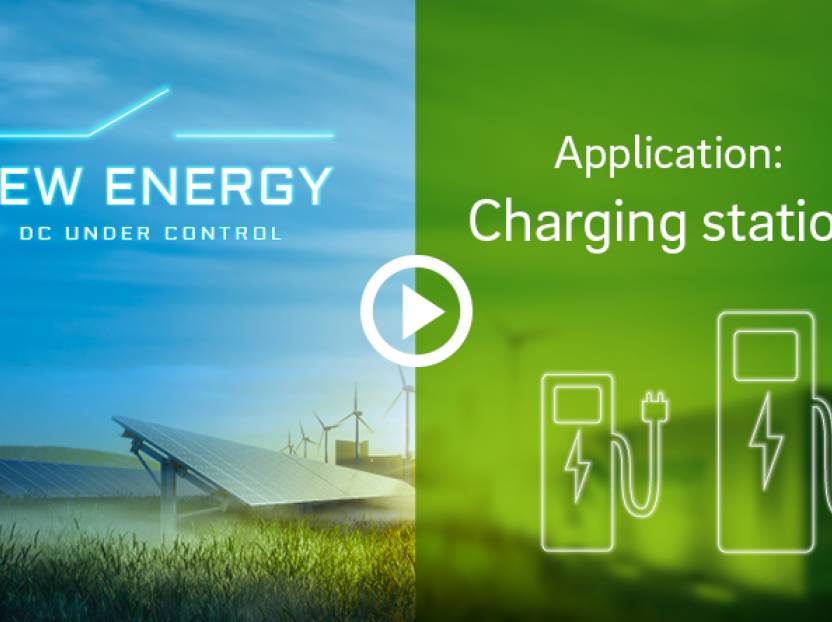Emission-free and efficient local public transport
DC contactor C310 for electric bus charging stations

Photo: Stadtwerke Münster
Discussions about pollution in urban areas mean that electromobility is continuing to gain momentum. A wide range of funding options are also contributing to the steady increase in the proportion of electric buses in local public transport. Intelligent charging solutions are a prerequisite for the smooth operation of these electric vehicles.
Alongside cities such as Kiel, Hamburg and Dusseldorf, Munster too is intending to further expand its electric bus fleet by 2030. Here, the plan is that as early as 2020, further routes will be electrified and 4 electric bendy buses will enter service.
To charge the buses, intermediate stations, end-of-line stations and depots are being equipped with a high capacity charging station supplied by SBRS GmbH. Dependent on the underlying concept, charging takes place via mast charging stations or cable-based solutions and takes just a few minutes.
Schaltbau series C310 DC contactor are being used successfully in this technological charging solution.
What does the Schaltbau C310 contactor do?
In this particular application, two compact C310 contactors replace the 3-pole contactor that has been used up until now. By using the contactors in the positive and negative paths, there are two independent switching elements in the circuit that safely disconnect under all operating conditions. In this way, the contactors ensure safe galvanic isolation between vehicle and charging point. Additionally, should hazardous situations arise, the contactors can also switch under full load, without critical situations occurring.Why contactors C310 are used:
- Safe disconnection of high loads: If necessary, the contactor can reliably disconnect high currents and voltages, irrespective of the current direction
- Thermal continuous current up to 500 A, at temperatures up to 70°C
- Low contact resistances and thus reduced power loss
- More compact design compared to the previously used contactors

